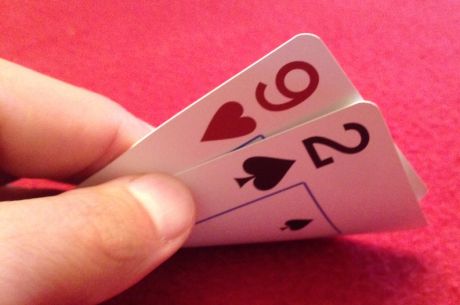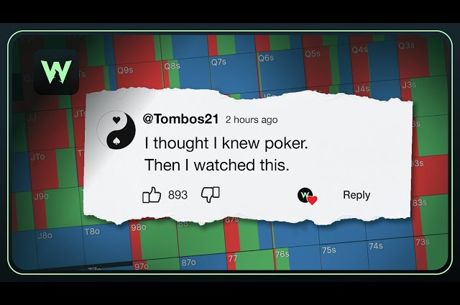Making Opponents Uncomfortable with Late-Position Limping

Diligent readers of this space know that there are good reasons to open for minimum raises in tournaments — and that this tactic was once upon a time considered a weak play. More importantly, they know that preflop guidelines aren’t brute facts. Rather, they flow from a proper understanding of the principles governing early-street play.
Another tactic once considered a “fish move” is to open by limping, especially from late position. One reason people don’t like this play is simple — if you limp when you could raise, you lose the chance to win the pot immediately.
Championship No-Limit and Pot-Limit Hold’em by T.J. Cloutier and Tom McEvoy — first published many years ago — is not necessarily the poker book that best applies to the modern game. But it can be worth keeping in mind Cloutier and McEvoy’s gruff simplification they share in their book: “A bettor be; a caller never be.”
Preflop limps are like large preflop raises, however, in that the same principles that usually speak against them sometimes recommend them. Counterintuitively, limping instead of raising can actually make it harder for your opponent to win the pot.
This is because limping can keep the pot too small for your opponent to move all in comfortably. One time to look out for these situations is when the effective stacks are between 20 and 25 big blinds. If you raise, even for a minimum raise, an all-in reraise will often be for between 3 and 4 times the pot — and this will often be an attractive proposition for an aggressive player.
Suppose, then, that you have a hand that you would like to play but that cannot stand an all-in reraise. Further suppose that the raise will not be called (instead of folded to or jammed on) very often. It is usually correct to raise anyway, if you have enough fold equity, and to fold otherwise. Occasionally, however, limping is better still.
Your opponent can’t easily jam, however, if you limp. Keeping the pot smaller turns a reasonable overbet into an unreasonable one. If your opponent wants to raise, he will probably have to make it between 3 and 5 big blinds. That gives you the chance to jam comfortably (and of course you will also be able to fold or call).
Now suppose you have a hand like Qx9x-offsuit or Kx5x-suited on the button. The stacks are 24 big blinds, and it’s been folded to you. You shouldn’t want to fold such a strong hand on the button, but neither should you be eager to commit your stack with it. Under certain circumstances limping can be the best of your options.
A memorable user of this tactic is Phil Collins who employed an open-limping strategy at the 2011 World Series of Poker Main Event final table. His play demonstrated another important principle: if you’re going to limp with some hands, you have to limp with more than just the ones with which you’re not eager to get all in. (For more on Collins’s limping strategy, check out his interview with Kristy Arnett from an episode of Strategy with Kristy.)
Vanessa Selbst employed this strategy as well on her way to victory this summer in Event #2: $25,000 Mixed-Max No-Limit Hold’em. She frequently limped in the heads-up final against Jason Mo, and her play teaches us two more lessons:
- You shouldn’t limp with only a few marginal hands, but you don’t have to revert to limping (or folding) all your hands. In the last stages of the tournament, Selbst used a mix of limps and raises.
- Limping isn’t only a strategy to use against weak or hyper-aggressive players. Even against a strong opponent like Mo, Selbst preferred the options available to her after limping than those she would have had after raising. The simple scenario above demonstrated that limping can improve your future options, and this is true even when limping doesn’t prevent your opponent from shoving.
If you study Selbst’s play — which you can do by going back through PokerNews’ hand-for-hand reporting in the Event #2 live updates — you will likely extract more lessons than these. The essential point, however, is that the chance to win immediately is only one among many reasons to play a hand before the flop. Occasionally, if rarely, other benefits — including the ability to create good situations later — tip the scales from raising to limping.
Adding this play to your arsenal will, if you deploy it wisely, make you tougher to play against.
Be sure to check out Nate and Andrew Brokos on the Thinking Poker podcast, and for more from Nate visit his blog at natemeyvis.com.
Get all the latest PokerNews updates on your social media outlets. Follow us on Twitter and find us on both Facebook and Google+!








